How to Feed a Cat
Just like other animals, cats depend on their diet to stay healthy. For instance, if your feline friend exceeds their ideal weight, they are more at risk of having heart issues, infections, and other problems. Fortunately, there are certain things that you can do to organize your pet’s meals and avoid these complications.
5-Minute Crafts has prepared this guide to help you figure out how to feed your cat.
❗Important: We remind you that this article has been created for informative purposes only and does not replace professional advice.
1. Visit a vet to determine your cat’s needs.
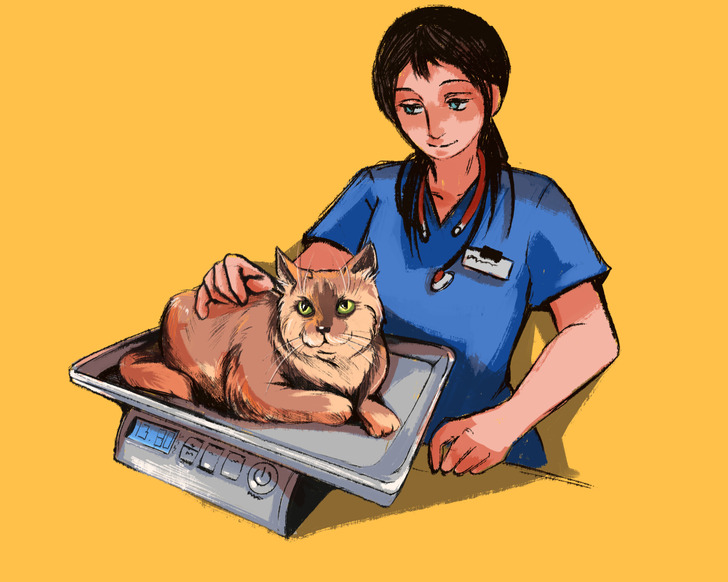
First of all, it’s important to understand that the amount of food your cat needs to eat can depend on different factors, like age, size, metabolic rate, how much exercise they get, and environmental conditions. Therefore, taking your pet to the vet will help you identify their ideal weight and daily calorie intake.
💡 Keep in mind that a domestic cat should weigh around 10 lbs (4.5 kg) to be healthy. However, this can depend on their breed and frame.
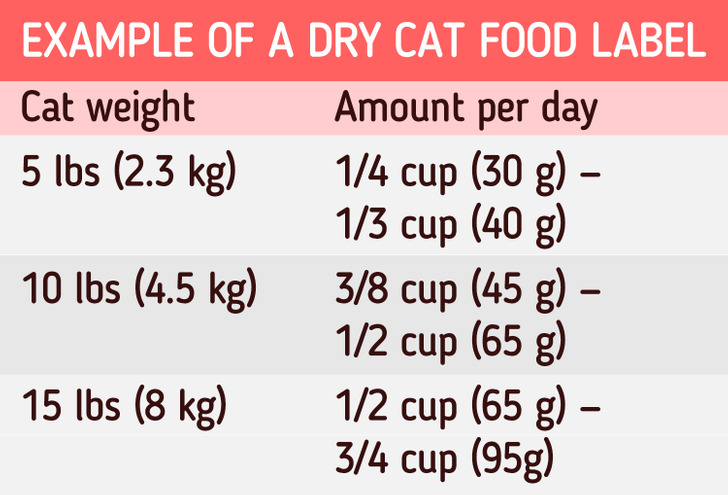
In the meantime, you can follow the feeding guide above, which is very similar to what a dry cat food label looks like. This will help you figure out the amount of food your pet should be eating. However, keep in mind that the ranges may be too vague to fully cover the needs of a cat within a specific weight range.
2. Calculate the amount of food your cat will have.
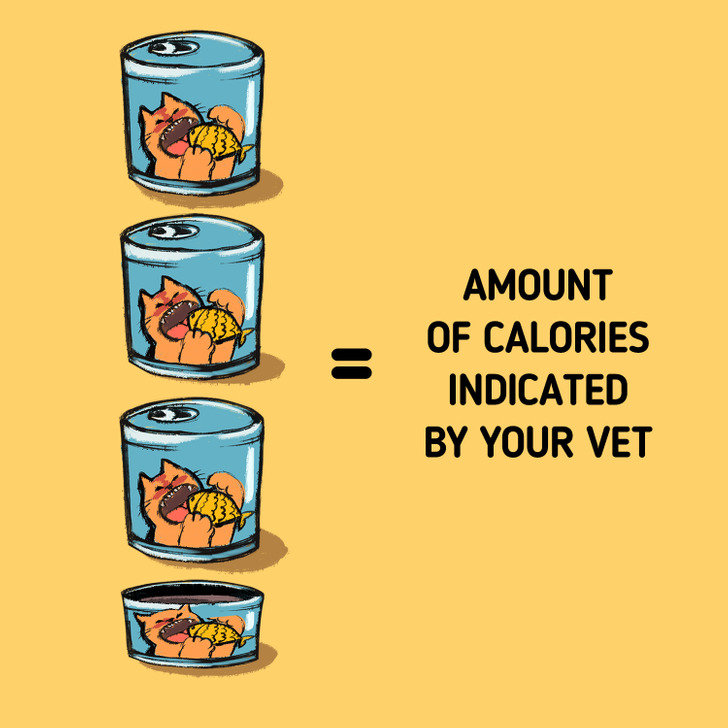
After visiting your vet, calculate how much food you will be giving your cat throughout the day. For example, if the vet indicates that your cat should get 240 calories per day and each can of wet food has 73 calories, you should feed your pet with 3.3 cans every day.
💡In order to keep a cat at their normal weight, experts recommend providing between 24 to 35 calories per pound every day.
✅ Remember that wet food has fewer calories than dry food due to its water content. So, make sure you’re giving your cat enough wet food to meet their ideal calorie intake.
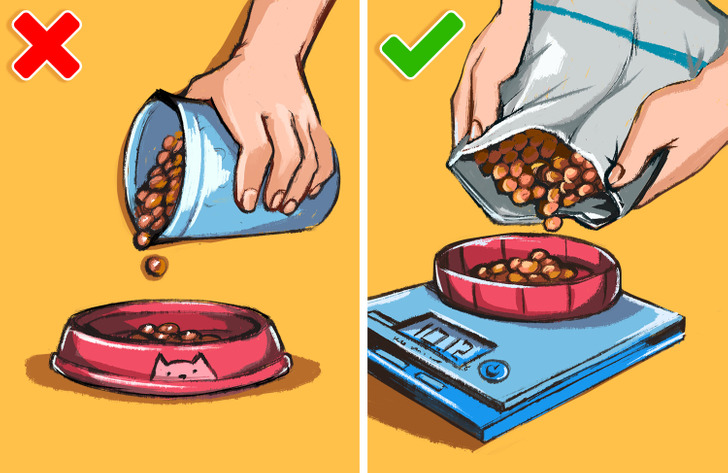
If you’re feeding your cat with dry food, it’s advisable to determine the amount of food with a digital scale. This method can be much more accurate than using a cup.
✅ According to experts, measuring your cat’s food will help you prevent overfeeding, which may lead to obesity and other weight-related issues, like osteoarthritis and diabetes. Moreover, your pet will be healthier and it will be easier for veterinarians to examine them.
3. Divide food into servings.
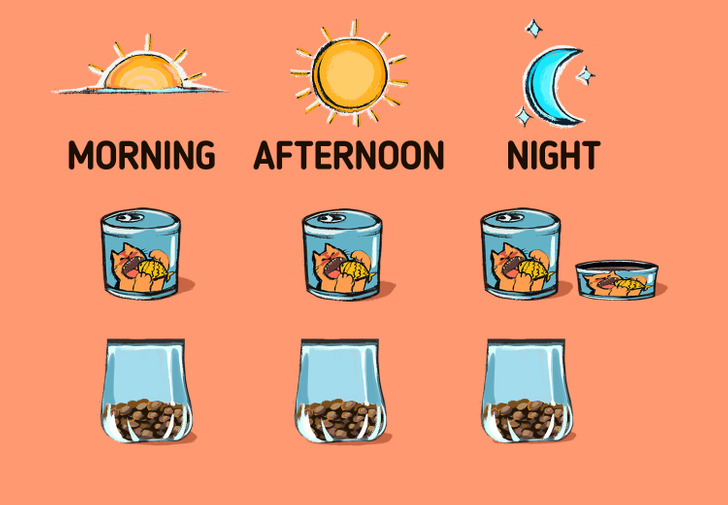
After completing the previous step, divide the amount of food into 3 portions to feed your cat during the day. For example, if you’ve calculated that your pet needs 3 1/3 cans per day, feed them with 1 can in the morning, 1 can in the afternoon, and 1 1/3 cans at night.
Remember that feeding times can depend on your schedule. If your daily routine does not allow you to follow the previous guidelines, keep in mind that cats should be fed at least twice a day, around 12 hours apart.
❗ Don’t forget to consider the calories that come from treats and other snacks you may offer throughout the day.
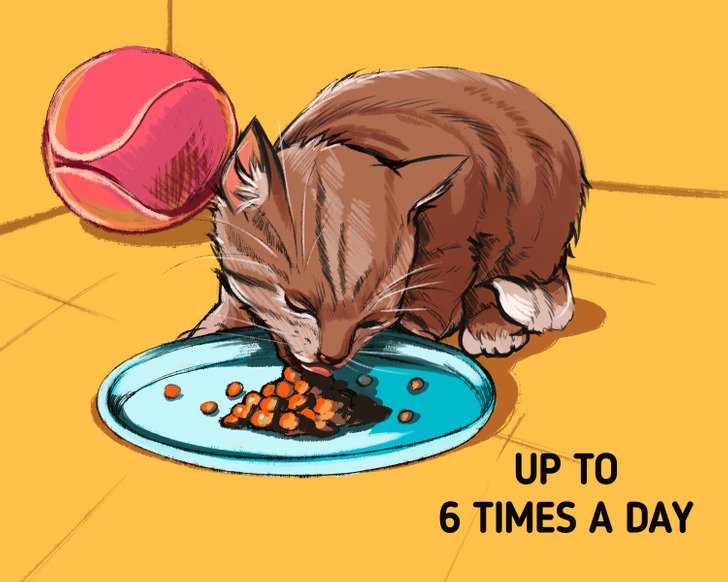
On the other hand, kittens should be fed with small portions of food up to 6 times a day, at regular intervals. It’s also advisable to give them wet food and introduce dry food as they grow up.
✅ Kittens can transition from kitten to cat food at around their first birthday or between 18 months to 2 years of age if your kitten is a large breed. Since this can depend on different factors, it’s always advisable to ask a veterinarian about the right time to do it.
✅ Keep in mind that for kittens under 6 months of age, their weight will be around their age in months. For instance, a 2-month-old kitten should weigh approximately 2 pounds, and a 3-month-old kitten should be around 3 pounds. After 6 months of age, their weight can be more variable as they start reaching adulthood.
❗ Make sure to feed your little friend with food that has been specifically formulated for kittens, as these will provide the necessary amount of nutrients.
Other things to consider when feeding your cat:
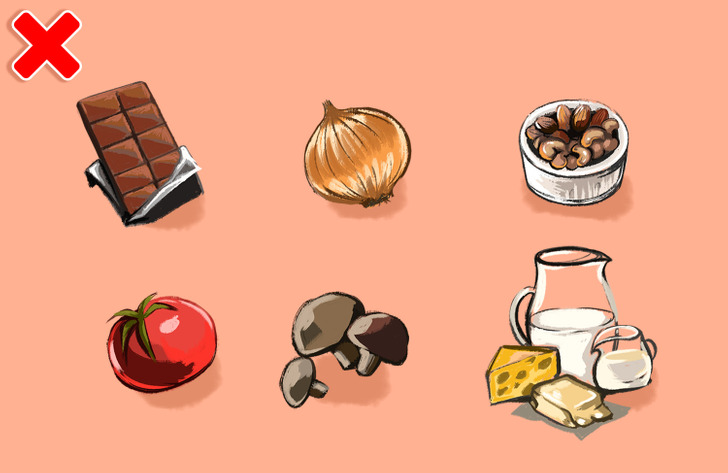
- Beware of unsafe foods. There are certain foods that are highly dangerous for cats. Some of these include: chocolate, onions, nuts, tomatoes, and mushrooms, among others. At the same time, milk and dairy products are not recommended either since lactose can cause digestive problems.
❗ Make sure you get well-informed about this topic before giving your cat foods that are different from the ones specially formulated for them.
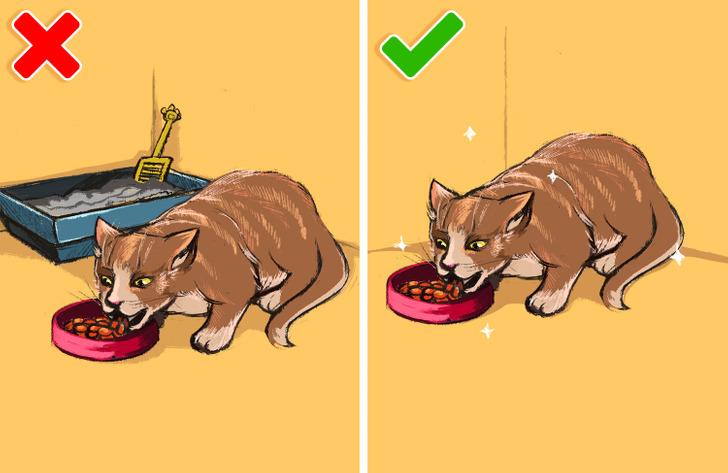
- Don’t place your cat’s food and water bowls close to their litter tray. Make sure to keep them in a clean area. It’s also recommended to clean food bowls every day as this will prevent the growth of harmful germs and bacteria.
- Keep water available. Provide clean fresh water at all times in ceramic or metal bowls. If you can, place a second water bowl away from their food.
- Try to be as consistent as possible and stick to your cat’s diet. Changing their food brand and flavor too often can cause stomach problems.